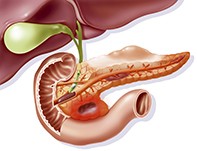Peer Reviewed
Feature Article Endocrinology and metabolism
Diagnosing and treating secondary causes of diabetes
Abstract
Identifying and treating the underlying condition in secondary diabetes often improves the diabetes and may in some cases reverse it.
Key Points
- The main secondary causes of diabetes are genetic defects of beta cell function and insulin action, disease of the exocrine pancreas, endocrinopathies, drugs or other chemicals and infections.
- The mechanisms that cause secondary diabetes relate to the physiology and pathophysiology of the secretion of insulin and its action on target tissues.
- The goal and modalities of treatment for secondary diabetes are similar to those for the type 1 and type 2 forms of diabetes.
- Most cases of secondary diabetes require specialist management, often supported by a multidisciplinary diabetes care team, because of their uncommon and particular nature.
- The key to managing people with secondary diabetes is considering that the condition may be present, as new diagnoses may then occur associated with the cause and further options in therapy, including treating the primary cause, may become possible.
Picture credit: © SPL/Jacopin, BSIP.
Purchase the PDF version of this article
Already a subscriber? Login here.

